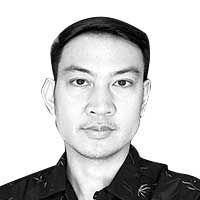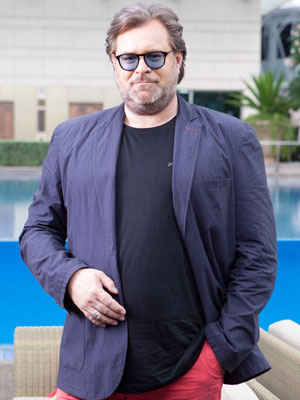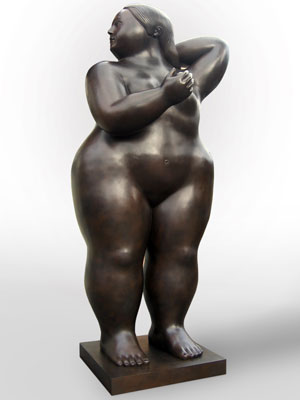Southeast Asian art: A star on its own stage

From essentially trade shows for insiders, art fairs have evolved into a lifestyle and cultural event where everyone is welcome, and not just those who have a direct participation in the selling and buying of artworks. The spectating public, in fact, comprises the largest number of attendees, which means that contemporary artworks get to be enjoyed by a large audience before they are snapped up by collectors. As a social event, an art fair is now the place to see and to be seen — and to take selfies, of course.
Part of an art fair’s radical reinvention has been brought about by Lorenzo Rudolf during the time he held the reins of Art Basel, the mother of all art fairs, as its director. During his tenure between 1991 to 2000, Rudolf established corporate partnerships, incorporated branding and marketing into the DNA of the fair, and tirelessly networked with collectors and investors. Now, no one doubts that Art Basel in its three locations (Basel, Miami and Hong Kong) is the biggest and most happening art fair in the world.
Now, he is Southeast Asian art’s biggest champion. In 2010, Rudolf established Art Stage Singapore which he originally envisioned as “a matchmaking point for collectors, artists, gallerists, curators and art enthusiasts.” In a mere five years, the fair, which will showcase its fifth edition exactly a month from now (Jan. 22-25, 2015) at the Marina Bay Sands Expo and Convention Center, has become the go-to place if you want to take the pulse of contemporary Southeast Asian art.
 Man of the moment: Instrumental in making Art Basel as the biggest and most happening art fair in the world, Lorenzo Rudolf brings his leadership and business savvy to Art Stage Singapore, “a matchmaking point for collectors, artists, gallerists, curators and art enthusiasts,” which will be held from Jan. 22 to 25, 2015.
Man of the moment: Instrumental in making Art Basel as the biggest and most happening art fair in the world, Lorenzo Rudolf brings his leadership and business savvy to Art Stage Singapore, “a matchmaking point for collectors, artists, gallerists, curators and art enthusiasts,” which will be held from Jan. 22 to 25, 2015.A burly man with an Ernest Hemingway beard and commanding presence, Rudolf unequivocally states: “We have a momentum at the moment for Southeast Asian art worldwide.” The best country, he says, that can take advantage of and most benefit from this upswing is the Philippines. “You have the artists, very young, strong artists here, and you have the galleries. In most other countries you only have artists, not the galleries (and vice versa).”
With those two important components already in the mix, Art Stage Singapore enters the picture by offering the platform on which Philippine art can gain an international audience. While in other global art fairs Asian art in general and Southeast Asian art in particular can only enjoy marginal coverage, at the Art Stage Singapore they are its superstars.
“Art Stage has a clear Asian identity,” he says. “We want to show what Asia is. It’s the place where you can discover and experience Asia. It’s also logical doing the fair in Singapore with the fair’s very strong focus on Southeast Asia. I think that is our responsibility. We are, in a certain way, the door, the bridge of Southeast Asia to the global art world.”
About 70 percent of the 145 galleries are from Asia while the remaining 30 are from the West. (“We are not a ghetto,” Rudolf states as to why the western galleries still get to show at the fair.) Comprising the Philippine contingent for Art Stage Singapore include Altro Mondo, ArtInformal, Finale Art File, Light and Space Contemporary, Silverlens, Galerie Stephanie and The Drawing Room — most of which are known for showcasing emerging talents.
With western galleries rolling out their carpets and establishing a permanent presence in Asia, Rudolf says that Asian art players should consolidate their forces, step up to the plate and participate in international platforms such as Art Stage Singapore if they want to survive the competition, flourish, and become part of the conversation of global contemporary art.
 Botero’s beauty: Greeting the visitors of Art Stage Singapore will be the voluptuous and voluminous beauty, “Standing Woman,” a sculpture by Colombian master Fernando Botero.
Botero’s beauty: Greeting the visitors of Art Stage Singapore will be the voluptuous and voluminous beauty, “Standing Woman,” a sculpture by Colombian master Fernando Botero.“That means,” Rudolf says, “that I have to convince the galleries: ‘You have to step in the international limelight. You have to think what you want. Do you want to stay as a local gallery? (If yes), then that’s fine. That’s your decision. But if you want to have access to international curators, collectors, museums, if you want your artists to have the chance to be part of international collections and exhibitions, you have to come out.’”
While the collectors of yore used to check out the works from gallery to gallery, from country to country, now they are traveling only to “selected art fairs, few selected biennales.” For most galleries, an art fair is the only opportunity for them to reach these collectors. “If you are not there, nobody will realize that you (exist).”
For instance, Jorge Pérez (after whom the Jorge Pérez Pérez Art Museum in Miami was named) will touch base with fellow collectors through the conduit which the Art Stage Singapore provides. “I’m glad to introduce him to the Asian art scene, to certain museums in the region to discuss what it means to build up a museum, make a private investment, etc.,” he says.
An art fair, while clearly a commercial enterprise, should not forget “content,” “the academical side,” says Rudolf. As such, “Eagles Fly, Sheep Flock: Biographical Imprints - Artistic Practices in Southeast Asia,” a selling exhibition featuring cutting-edge works from the region, is “a curated platform. It’s not just an accumulation of works done with a beautiful design. From the beginning to the end it’s done by a curator in an academic approach.” Filipino artists Yason Banal, Wawi Navarroza and Gary-Ross Pastrana will be participating.
Complementing the Southeast Asian Platform will be the “Russia Platform,” a showcase of edgy, contemporary art from Russia curated by Olga Sviblova, director of Multimedia Museum Moscow; “Video Platform,” a preview of the evolution of video art through a multitude of its iterations; and “Modern Platform,” an exhibition of the works of the masters from Southeast Asia.
Specific art works to look forward to include “Contours of a Rich Manoeuvre” by Singaporean artist Suzann Victor, the installation “Mystic Abode” by Indian artist Paresh Maity, and the monumental sculpture, “Standing Woman,” by the Colombian master Fernando Botero. The British duo Gilbert & George will create a new large-scale work as part of the entrance of the VIP lounge. “I have never seen Gilbert & George, such superstars, invest themselves and have so much fun in creating the work,” says Rudolf.
With Rudolf’s track record with Art Basel, one can’t help but think of Art Stage Singapore’s rosy prospects. “I see the future of this fair as one of the five, six top fairs in the world, as one of the two top fairs in Asia, as the fair which is really the window for Southeast Asia and for emerging new things happening in Asia,” he says. “We have to go in the way as Frieze Art Fair. Frieze was launched in the ‘90s as a counterpart to Art Basel, as the young edgy fair. They started with young, edgy galleries. Today these galleries are the established ones in the world. The same thing will happen here.”
* * *
For information about Art Stage Singapore, visit www.artstagesingapore.com.



















